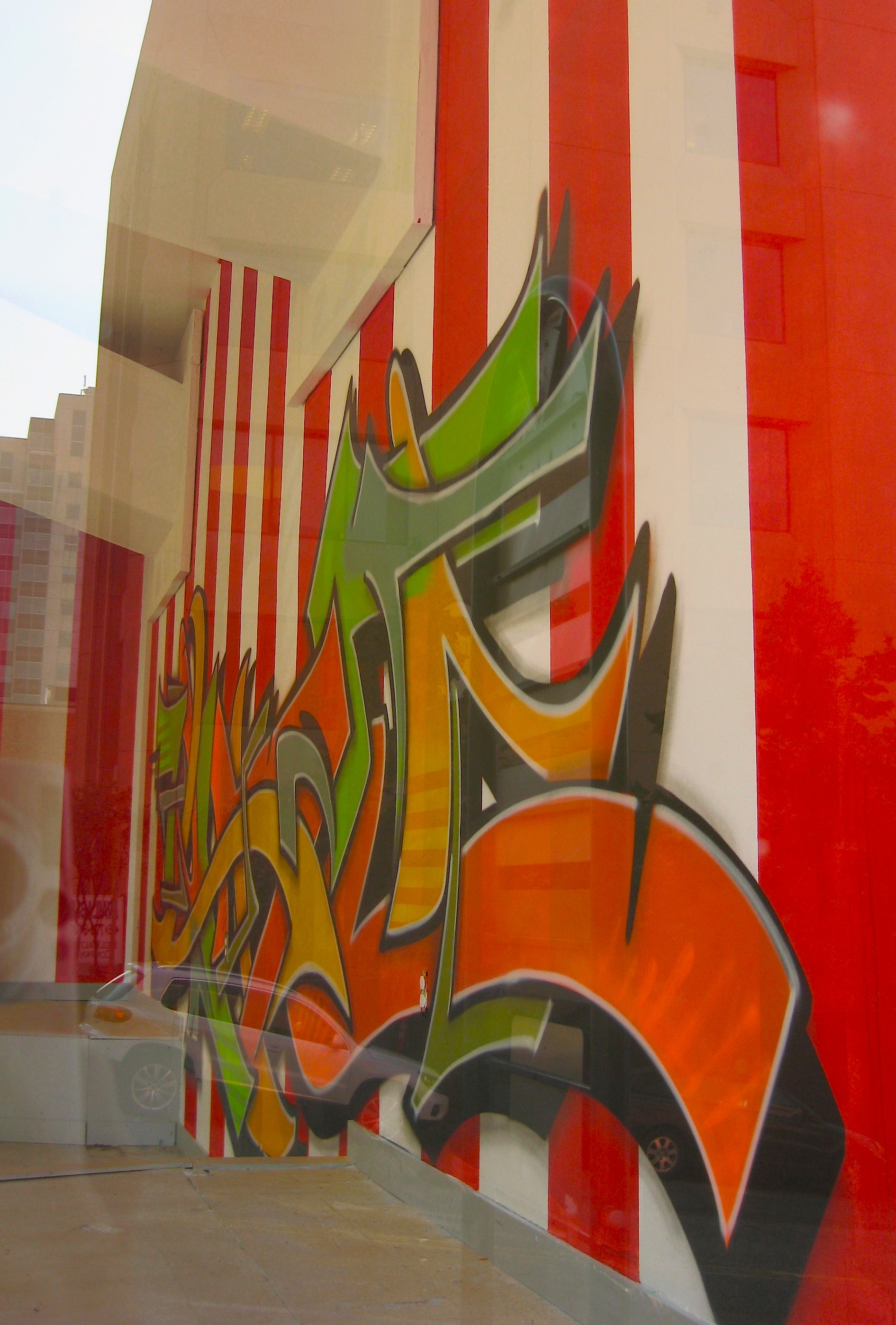
Graffiti is an art that has morphed brazenly, impudently and also furtively since the 1980s, leaving in its aerosol wake furious masterpieces of street art and social commentary, and creating a pantheon of superstars including Jean-Michel Basquiat, Banksy and Shepard Fairey. Tacoma artist Kenji Stoll, who was not yet old enough to hold a spraypaint can when Keith Haring began haunting the New York City subways, is no stranger to the controversy surrounding graffiti: “[It has found] its way into galleries, museums, books, media marketing, pop culture and people’s conscience – though the debate continues as to whether it is art or vandalism,” he says.
“Throughout my career as a graffiti artist I’ve met and worked with people on both sides of the debate…I’ve found that oftentimes some of the best graffiti art blurs the lines between what some people would consider vandalism and what some would consider art.” Stoll points to the legally sanctioned Broadway “graffiti garages” in downtown Tacoma as a prime example of the paradox.
Stoll plumbs the contradictory nature of contemporary graffiti in a new work at the Woolworth Windows – a soaring aerosol mural that he executed in full view of the public. “My project within these windowfronts was to explore that concept and get people to question whether what they were viewing was indeed a work of art,” he says. Since the piece is framed within the context of a Spaceworks installation, “it [is] contained within a ‘glass cage’ of sorts,” drawing attention to the ideological as well as physical terrain graffiti covers. Stoll’s huge mural shows spontaneous mastery, yet it is bounded by painted red vertical bars.
Is the spray can mightier than the sword? Interviewers have often baited the brilliant and elusive British graffiti artist, Banksy (whose murals have caused building walls to be torn from their foundations for their mindboggling value) with questions such as this:
“What do you say to people who claim the way you express yourself is crass, dumb and simplistic?”
Answer: “Well duh. They’re right of course. Most of this stuff is designed to be viewed from a moving vehicle.” Of course, it is “simplistic” in the same way a koan is. The Banksy model seems to prove that an artist can be all at once an outsider, bankable and something of a genius. Kenji Stoll’s current work seems to pose the same sort of question. Kenji Stoll at the Woolworth Windows, 11th & Broadway, through December 15, 2012.